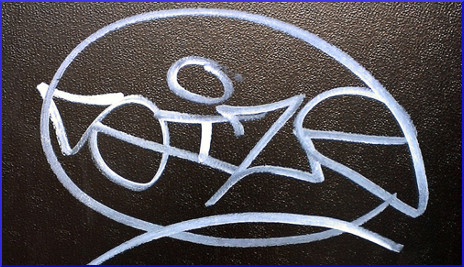 Sadly, childhood obesity is inextricably connected with bias, stigma, discrimination, blaming, and shaming. “Obesophobia” is an actual word. It is an intense and abnormal fear of weight gain that might be caused by family influence or a distorted self-image that developed in some other way. Too often, the next step is anorexia or bulimia.
Sadly, childhood obesity is inextricably connected with bias, stigma, discrimination, blaming, and shaming. “Obesophobia” is an actual word. It is an intense and abnormal fear of weight gain that might be caused by family influence or a distorted self-image that developed in some other way. Too often, the next step is anorexia or bulimia.
Logically, it seems like there should also be an objective meaning, similar to “homophobia,” which is an intense fear of and aversion to homosexuals. But no, there is a different word for the fear of fat people: cacomorphobia, which in Greek means fear of an ugly shape. Fearof.net says:
Cacomorphobes are terrified of fat or obese people; they simply cannot control the terror they experience around such individuals. They often realize that they are being judgmental (often downright mean), and yet they are unable to control the panic attacks they experience at the mere thought or sight of fat people…Many phobics, for example, reveal feeling nauseated upon seeing fat people eating or bingeing on high calorie foods at restaurants.
Erik Hayden wrote for PSMag.com about research that was done at Bowling Green State University, showing that “individuals are very likely to form an immediate negative impression toward the obese.” More than 300 subjects were shown both females and males ranging from normal weight to extremely obese, and were asked to agree or disagree with such statements as “People like this make me feel uncomfortable.” The results?
Participants didn’t merely exhibit a preference for thin figures and indifference to obese ones—they showed active dislike toward these theoretically obese.
The root of fat-shaming seems almost to be instinctual. But Hayden noted one detail that may or may not be comforting. No gender bias seemed to be involved. The dislike of the obese applied equally to the virtual males and virtual females employed in the study.
Last year, Conscienhealth.org reported on a seeming change in the word “fat” itself. The example given was that while 60 percent of women who were surveyed said that “fat” is an offensive insult, many activists are also busy reclaiming the word and investing it with pride. Fat acceptance is definitely a social force, and probably not a useful one. This article says:
Fewer people who describe themselves as overweight are willing to say that “fat” is clearly just an objective description of someone’s weight. This is true whether you compare them to people who think of themselves as having a healthy weight or people who describe themselves as having obesity.
A report on the plus-size fashion industry traced the linguistic variety that has described clothes for big women. “Full-figured” is a term that originated with the lingerie industry. “Plus” is only about ten years old. “Curvy” is gaining popularity. Plus-size model Alexandra Boos told New Yorker contributor Lizzie Widdicombe that a movement is afoot to reclaim “fat.” Boos tends to doubt that a universally acceptable word will ever be agreed upon. During Full Figured Fashion Week, a panel discussed the question of whether “plus” has become a dirty word.
The Obesity Action Coalition believes that obesity is a disease, and that fat-shaming is the last culturally acceptable form of discrimination. The publication “Understanding Obesity Stigma” aims to reduce the bias that clings to obesity. The Coalition identifies separate areas of influence within the society, such as healthcare, media, education, employment and entertainment. The thought leaders among them are encouraged to abandon the old obesity-focused language and adopt “people-first language.” Working with the Rudd Center and The Obesity Society, they created a set of “Guidelines for Media Portrayals of Individuals Affected by Obesity.”
Your responses and feedback are welcome!
Source: “A Fatter Phobia,” PSMag.com, 02/08/10
Source: “What’s Becoming of the Word “Fat”?,” Conscienhealth.org, 08/14
Source: “The Plus Side,” NewYorker.com, 09/22/14
Source: “Weight Bias and Stigma,” ObesityAction.org, undated
Image by walknboston
(c) Childhood Obesity News – Read entire story here.